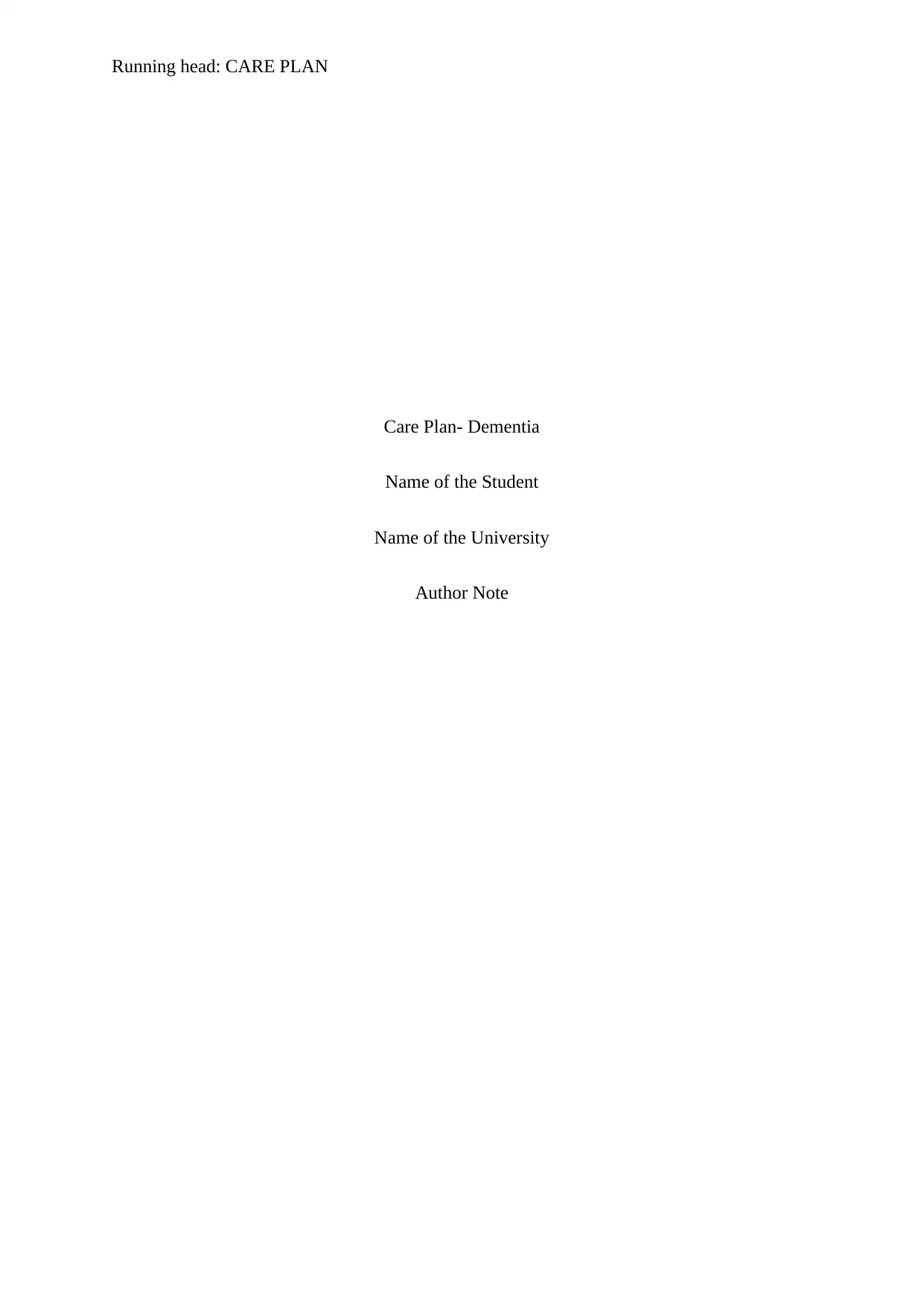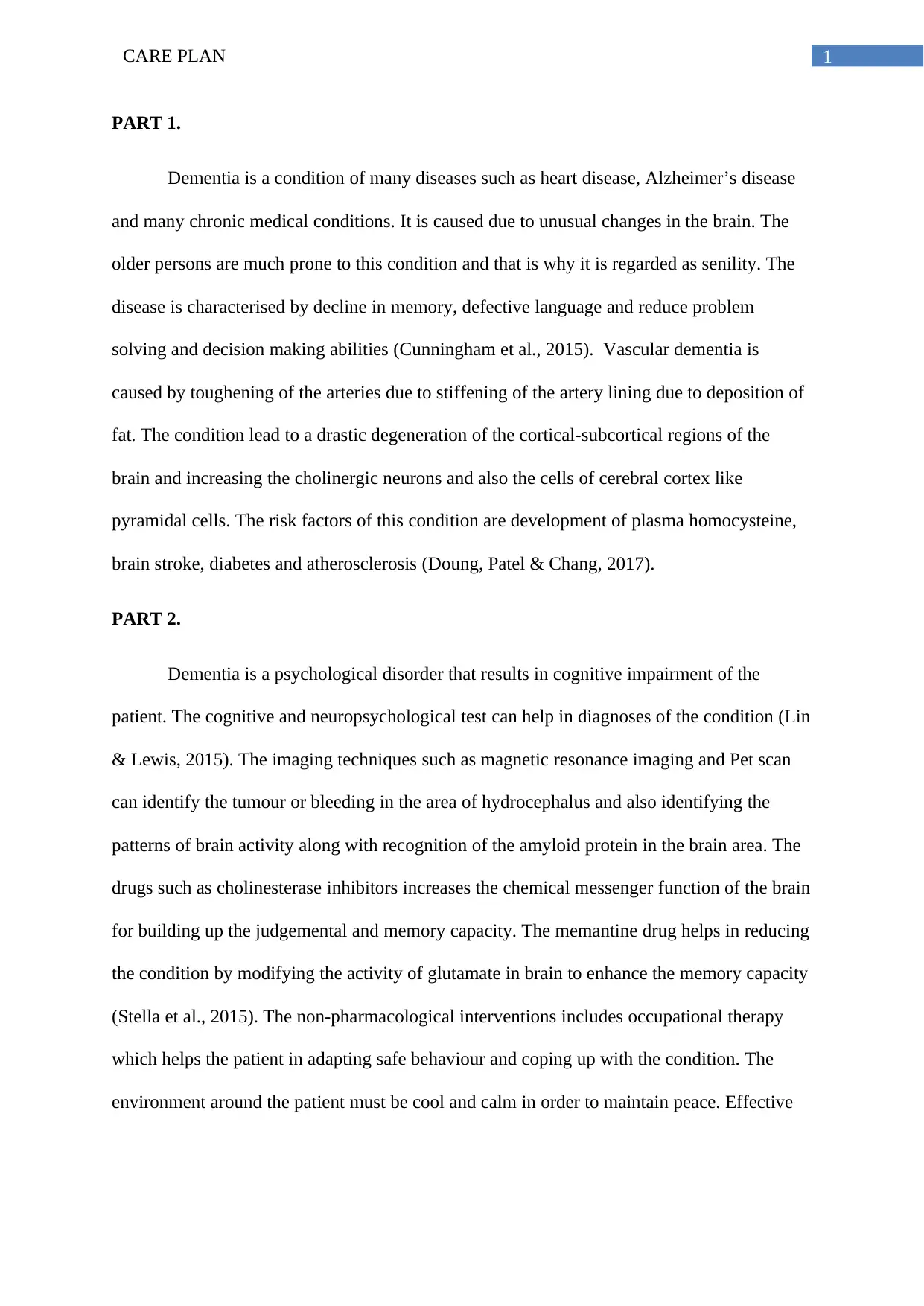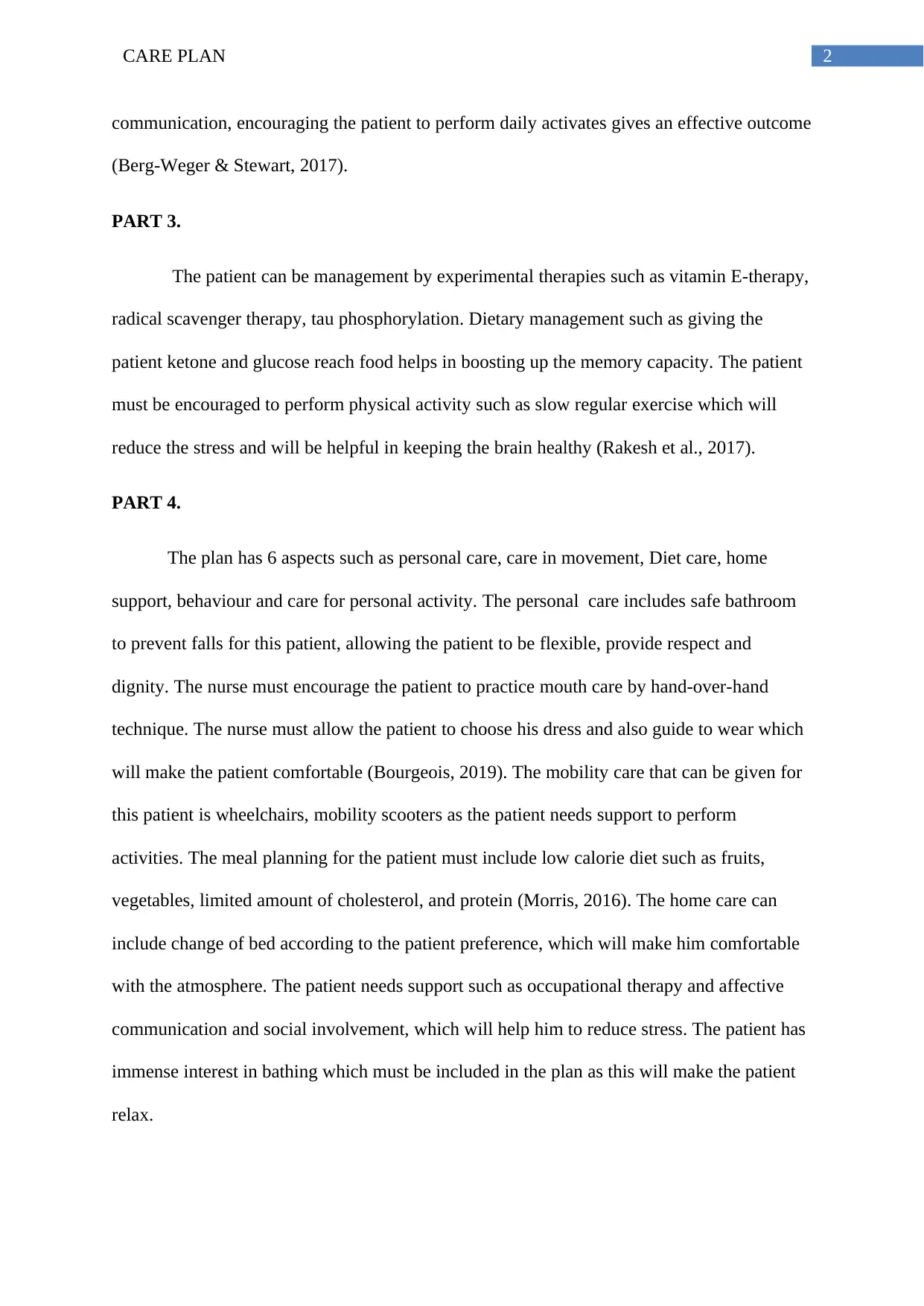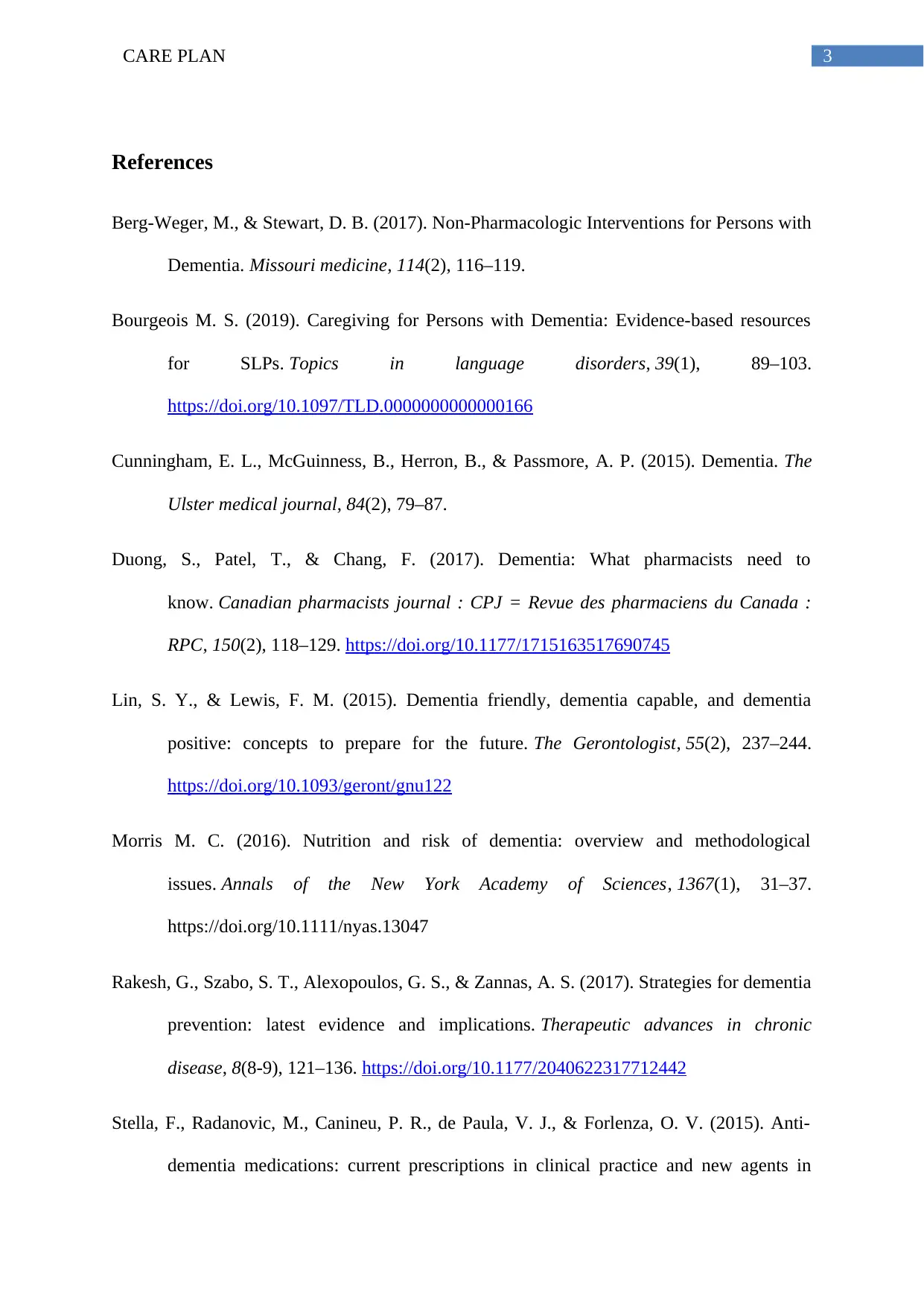University Care Plan: Dementia Management for Mr. Singh - PSW 161
VerifiedAdded on 2022/09/02
|5
|1010
|15
Report
AI Summary
This report presents a comprehensive care plan for a patient with Lewy Body Dementia and Parkinson's disease, based on the case of Mr. Singh. It begins with a general overview of dementia, its causes, and risk factors, including vascular dementia. The report then explores diagnostic methods, such as cognitive tests and imaging techniques, alongside pharmacological and non-pharmacological interventions, including occupational therapy and environmental modifications. Experimental therapies like vitamin E and dietary management are discussed, alongside encouraging physical activity. The core of the report is the detailed care plan, which addresses six key aspects: personal care (safe bathroom, encouraging self-care), care in movement (wheelchairs, mobility scooters), dietary care (low-calorie meals), home support (bed adjustments, social involvement), behavioral support, and care for personal activities (bathing). The plan emphasizes patient dignity, promoting independence, and adapting to the patient's preferences, with references to relevant research and guidelines.
1 out of 5












![[object Object]](/_next/static/media/star-bottom.7253800d.svg)